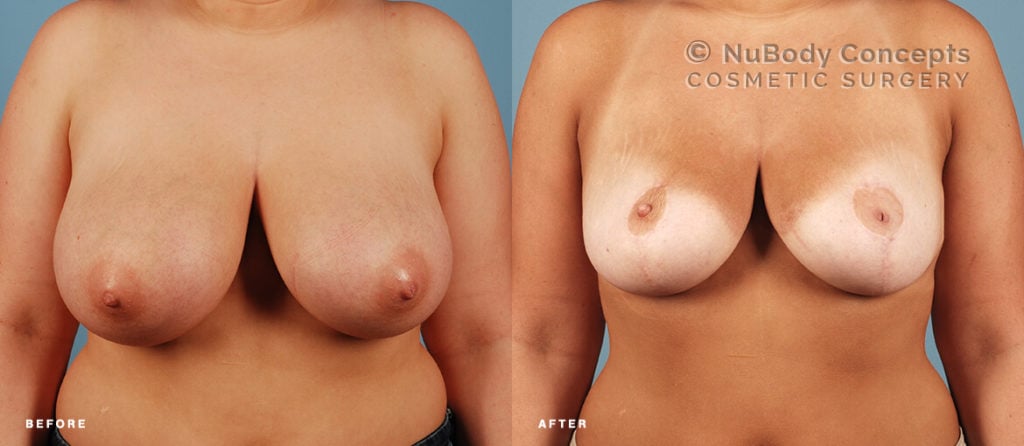
Medically reviewed by Dr. John Rosdeutscher – Written by Sine Thieme
According to the American Society of Plastic Surgeons (ASPS), 70,463 breast reduction procedures were conducted (for both women and men) in the United States in 2019. Some of the most common reasons patients are presenting for mammaplasty include head, neck, and/or back pain; shoulder grooving; mammary intertrigo; coracoid syndrome; or simply the desire to acquire a better breast shape.
Types of Breast Reduction Procedures
Your plastic surgeon can use one of several different techniques when performing breast reduction surgery. The technique used for any given patient is determined by existing anatomy, the amount of breast tissue being removed, and the desired outcome.
Some of the most common techniques include:
Liposuction for Breast Reduction
In some cases, a breast reduction procedure can be performed using only liposuction.
Liposuction for breast reduction is typically a much shorter procedure, is minimally-invasive, leaves virtually imperceptible scarring on the breasts, and offers lasting results. However, not all patients achieve optimal results with only liposuction.
Ideal patients for liposuction breast reduction include those who need or desire very little augmentation and have good skin elasticity and little to no sagging to correct. In most cases, liposuction is the best option for women whose excess breast size is due to excess fatty tissue.
For women with sagging, asymmetrical breasts or patients with stretched skin requiring the removal of a significant amount of tissue, the following techniques may benefit the most.
Vertical or “Lollipop” Method
A vertical breast reduction surgery follows the basic principles of plastic surgery – with a complete dermoglandular pedicle and no skin undermining. Both vertical and inverted-T both refer to skin resection patterns used for the procedure.
The vertical reduction method is best for women who require a more moderate breast resizing and have more noticeable sagging. This technique requires two incision sites: one around the nipple and areola and a second incision that runs vertically from the bottom of the areola to underneath the breast. This allows a plastic surgeon to remove excess breast tissue, skin, and fat, reshape the breast internally, and lift the breast into a more youthful position.
Although a vertical reduction lift can leave some scarring, it is limited to the area below the nipple. They are typically easily hidden beneath a bra or bikini top.
Inverted-T or “Anchor” Method
The inverted-T technique is one of the best options for women with moderate to severe breast ptosis (sagging). This method uses three separate incisions: periareolar, vertical, and horizontal incisions. Meaning, one incision will be placed around the edge of the areola, one vertically from the areola to the inframammary fold, and an additional incision along the inframammary fold.
This procedure removes excess breast tissue and allows for an increased ability for a plastic surgeon to reshape and reconstruct the breast if a patient desires a more significant breast size reduction or has considerable ptosis or asymmetry to correct.
Scarring from an inverted-T procedure may be more significant and noticeable compared to a vertical reduction. Unfortunately, the edge of the horizontal incision may extend medially to the sternum and laterally beyond the limits of a modern brassiere. However, with proper care, your scarring can fade significantly within the first year and can be easily concealed with clothing and, at times, a bikini top.

We hope that our overview of breast reduction types has served to give you a better understanding of how to choose the right procedure for you. Please don’t hesitate to contact us if you have any other questions.
If you are ready to get started, use the pink button to schedule a consultation with our board-certified plastic surgeon in Nashville or Memphis.















